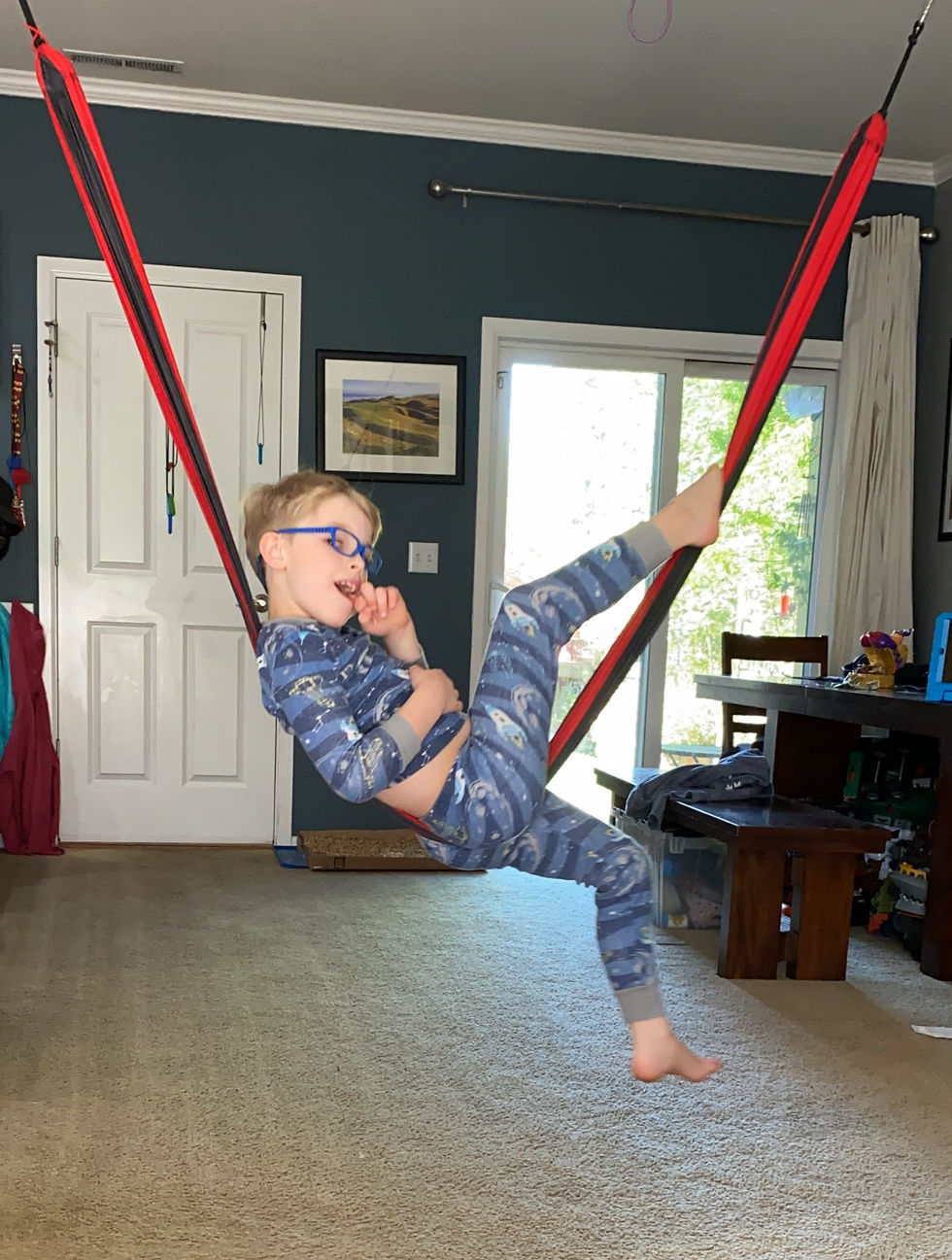What If Your Child's 'Difficult' Traits Are Actually Superpowers?
- Admin

- Aug 5
- 4 min read
How is your child's brain beautifully unique?
I want to tell you about Maya—a seven-year-old who couldn't handle birthday parties, melted down at grocery stores, and needed three outfit changes before school each morning. Her parents came to me exhausted, convinced they were failing because their daughter seemed so "difficult" compared to other kids.
But here's what I saw when I met Maya: a child whose nervous system was finely tuned to notice what others missed. She could sense when someone was sad from across the room. She noticed the subtle hum of fluorescent lights that bothered no one else. Her sensitivity wasn't a flaw—it was her superpower.
Maya's story illustrates something crucial about neurodiversity: what we often label as "difficult" behavior is frequently a beautiful brain doing exactly what it's designed to do.
The Problem with Our "One-Size-Fits-All" World
Here's what nobody tells us when we become parents: our world is designed for one specific type of nervous system. The neurotypical brain that can filter out background noise, transition smoothly between activities, and regulate emotions in predictable ways.
But here's the beautiful truth—human brains come in endless, wonderful variations. Some brains process sensory information more intensely. Others need more movement to think clearly. Some require extra time to transition between activities, while others hyperfocus with laser precision.
This isn't a design flaw. It's natural human variation, like having different colored eyes or varying heights.

Reframing the "Difficult" Child
Let's talk about some of those traits that make parenting feel hard—and what they might actually tell us about your child's incredible brain:
The "Overly Sensitive" Child : What adults often call "too sensitive" might actually be a child with exceptional emotional intelligence and empathy. These children often become the adults who notice when someone needs support, who create safe spaces for others, and who bring deep compassion to everything they do.
The "Hyperactive" Child: That child who can't sit still? Their brain might be brilliantly designed for movement-based learning. They often become innovative problem-solvers, natural athletes, or hands-on learners who think outside the box.
The "Rigid" Child: The child who needs routines and struggles with sudden changes often has a brain that craves predictability to function at its best. These children frequently become highly organized, detail-oriented adults who excel in fields requiring precision and consistency.
The "Intense" Child: That child who feels everything deeply—both joy and frustration—often grows up to be passionate, creative, and deeply committed to their values. Their intensity becomes fuel for changing the world.
What Works for Neurotypical Brains Works for All Brains
Here's something revolutionary: when we create environments that honor different nervous systems, everyone benefits. The accommodations that help neurodivergent children thrive—clear routines, sensory breaks, emotional regulation support—actually make life better for all children.
When we dim harsh lights, we help the sensitive child focus and reduce eye strain for everyone. When we build in movement breaks, we support the kinesthetic learner and help all children's brains reset. When we teach emotional regulation skills, we give tools that benefit every child's developing nervous system.
Creating a Neurodiversity-Celebrating Home
Honor Sensory Needs: Maybe your child needs a quiet corner to retreat to, or perhaps they need to fidget while they listen. Maybe they need softer clothing tags or prefer dimmer lights. These aren't accommodations—they're simply creating an environment where your child's brain can thrive.

Adapt Your Expectations: Instead of asking why your child can't handle what other kids can, ask: "What does my child's unique brain and body need to be successful?" This shift from fixing to supporting changes everything.
Celebrate Neurological Strengths: Start noticing what your child's brain does exceptionally well. Do they notice details others miss? Can they focus intensely on their interests? Do they bring creativity to problem-solving? These aren't consolation prizes—they're genuine superpowers.
Modify the Environment, Not the Child: Rather than trying to make your child fit the world, consider how you can make your corner of the world fit your child. This might mean noise-cancelling headphones for grocery shopping, a fidget toy for car rides, or extra transition time between activities.
The Ripple Effect of Acceptance
When we stop trying to fix our children and start celebrating their unique wiring, something magical happens. They begin to see their differences as strengths rather than flaws. They develop self-awareness instead of shame. They learn to advocate for their needs rather than hide their struggles.
And perhaps most importantly, they grow up knowing they belong in this world exactly as they are.
Your Action Step This Week
Here's what I want you to do: spend this week becoming a detective of your child's superpowers.
The Neurodiversity Strength-Spotting Exercise:
Each day, notice one thing your child's unique brain does well. Maybe they:
Remember details that amaze you
Show incredible persistence with their interests
Notice when others are upset
Think of creative solutions to problems
Bring intense joy to their passions
Ask questions that make you think differently
Write these observations down. At the end of the week, share what you've noticed with your child. Let them know that their brain isn't broken or difficult—it's beautifully, wonderfully unique.

Remember: what makes your child different isn't what makes them difficult. It's what makes them extraordinary.
Your child doesn't need to change to fit the world.
The world needs what your child's unique brain has to offer.




Comments